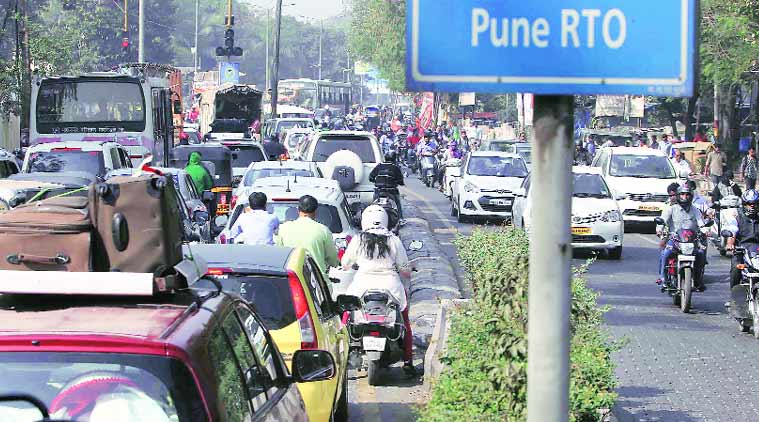WHEN IT comes to overall infrastructural development of the city, one cannot rule out traffic as its after-effect. Any city’s vehicular traffic situation indicates how ‘smartly’ it has developed or otherwise. In India, there are three cities that are almost at par with Pune as far as overall development is concerned —Hyderabad, Chandigarh and Bengaluru. However, there are a few lessons Pune can learn from its counterparts as well as cities that are considered to be far more developed — Mumbai and Delhi.
According to Christopher Benninger, who has studied Urban Planning at MIT and Harvard University, and has been advisor to the World Bank, United Nations, the Asian Development Bank and metropolitan development authorities on urban planning, compared to Pune or Bengaluru or Hyderabad, Mumbai’s mass transport system, in terms of trains and buses, is far more advanced over other cities. The New Delhi Capital Region, he feels, is moving quickly in the mass transport arena, and aspects of what they are doing with their Metro System can be a source of learning. “They are also leading in the interface between medium length bus trips, connected to longer distance Metro lines. Ahmedabad has pioneered the Rapid Bus Transport in India and they have employed advanced station designs, integrated with appropriate bus designs, making their rapid bus system.

“They are also leading in the interface between medium length bus trips, connected to longer distance Metro lines. Ahmedabad has pioneered the Rapid Bus Transport in India and they have employed advanced station designs, integrated with appropriate bus designs, making their rapid bus system user friendly. But they have lagged in putting up a modern Metro system,” he says.
The clear direction in urban transport is toward light rail and metros for heavily travelled sectors, connecting through Metro Stations with shorter bus loops, with stops along pedestrian pathways and cycle lanes, where there are cycle racks, says Beninger, who is a statutory member of the Andhra Pradesh Capital Region Development Authority; a Member of the GOI Committee to make recommendations for the Mumbai Port Trust Lands Redevelopment; and on the Board of Governors of the CEPT University, India’s leading center of urban planning.
Benninger feels Pune is going wrong in two areas. First, the huge investments in flyovers, underpasses and road widening that will attract more traffic to them, and ultimately again become choke points in the city’s movement system.
These investments are at the cost of more critical investments in a modern Metro System that travels underground in the city core. Second is the total neglect of our footpaths, crosswalks and cycle lanes. Here the Balewadi Cummins Boulevard is a model to study, he says.
Prashant Inamdar, Convenor, Pedestrians FIRST, states that traffic is a common urban problem in all major cities. As of now, situation in Pune, is probably better than other comparable cities but is worsening rapidly day by day, he says. A major reason for the traffic problem is faulty city planning. Land use, capacity of the area to sustain the level of activity and traffic and transportation network have not been considered in a coordinated manner though very closely interrelated. This has resulted in a chaotic traffic situation.
“Matters have become worse because of very poor public transport which has forced people to use personalized transport. The resultant drastic increase in number of vehicles much beyond the capacity of roads, causes severe traffic congestion,” says Inamdar. Poor design of roads and junctions with an outdated flawed traffic signal system coupled with under-utilisation of existing road capacity due to issues such as encroachment and poor maintenance of roads, add to the problem, he states.
Pointing out other problem areas, he says, “lack of proper, safe and usable facilities for pedestrians who then spill on the road which causes hindrance to traffic flow; rampant traffic indiscipline and lack of civic sense in citizens; lack of adequate manpower, funds and infrastructure for Pune Traffic Police leading to deficient traffic management and enforcement.”
[“source-indianexpress”]





